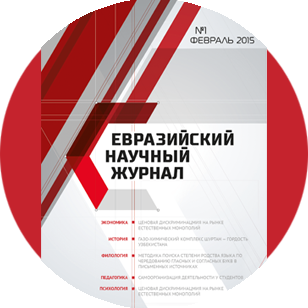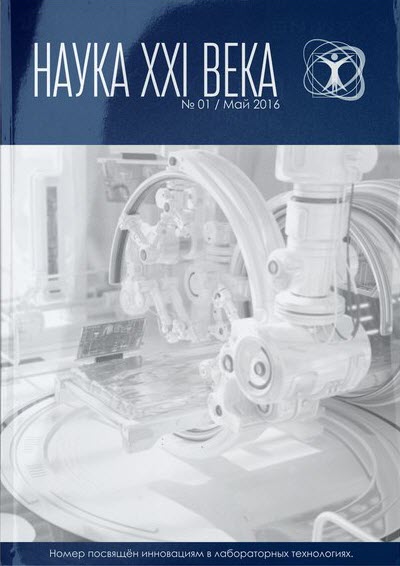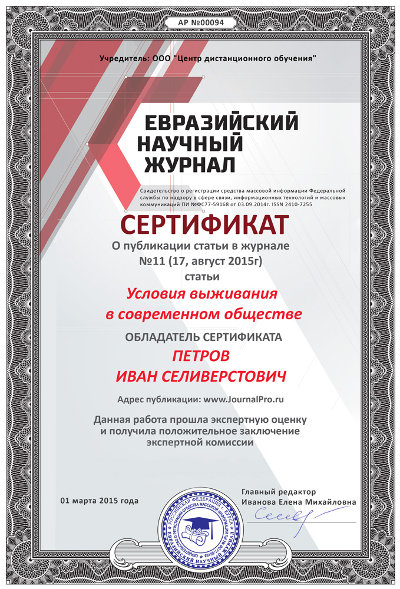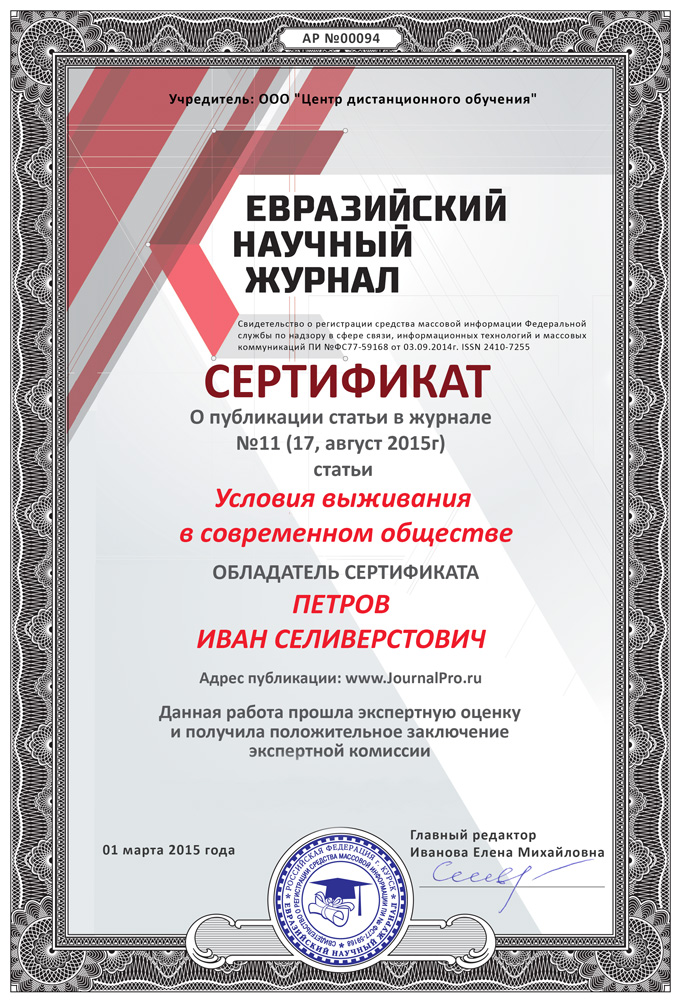Срочная публикация научной статьи
+7 995 770 98 40
+7 995 202 54 42
info@journalpro.ru
THE IMPACT OF ORGANIZING INDEPENDENT EDUCATION IN AN INTERACTIVE METHOD ON THE QUALITY OF EDUCATION IN TRAINING ENERGY ENGINEERING SPECIALISTS
Рубрика: Технические науки
Журнал: «Евразийский Научный Журнал №11 2024» (ноябрь, 2024)
Количество просмотров статьи: 340
Показать PDF версию THE IMPACT OF ORGANIZING INDEPENDENT EDUCATION IN AN INTERACTIVE METHOD ON THE QUALITY OF EDUCATION IN TRAINING ENERGY ENGINEERING SPECIALISTS
Rakhmonov Ikromjon Usmonovich
DSc, Professor, Tashkent State Technical University,
Tashkent, Republic of Uzbekistan
Ganiev Shakhruz Radjabovich
Assistant, Bukhara Institute of Irrigation and Melioration,
Bukhara, Republic of Uzbekistan
Temirova Rayhona Shahobiddin kizi
teacher, Oriental University,
Tashkent, Republic of Uzbekistan
Abstract: This study examines the impact of integrating interactive methods into independent learning for energy engineering students. A mixed-methods approach was employed, involving 120 undergraduates divided into control and experimental groups. The experimental group engaged in flipped classrooms, simulation-based learning, and collaborative projects over a
Keywords: interactive learning, independent study, energy engineering education, active learning, flipped classroom, simulation-based learning, collaborative projects, educational outcomes, student engagement, engineering pedagogy.
Introduction. In the rapidly evolving field of energy engineering, the demand for professionals equipped with both technical expertise and adaptive learning capabilities is paramount. Traditional educational methodologies, often characterized by passive learning environments, may not sufficiently prepare students for the complexities of modern energy systems. Consequently, there is a growing emphasis on integrating interactive and independent learning strategies to enhance educational outcomes. Interactive learning methodologies, such as active learning and flipped classrooms, have demonstrated significant improvements in student engagement and comprehension. Active learning shifts the focus from passive reception to active participation, encouraging students to engage in meaningful activities and critical thinking. This approach has been shown to increase student performance in science, engineering, and mathematics courses, reducing failure rates and enhancing conceptual understanding. Similarly, the flipped classroom model, which involves students reviewing instructional content outside of class and engaging in problem-solving during class time, fosters deeper understanding and application of knowledge
Energy engineering education, the integration of interactive and independent learning approaches is particularly pertinent. The complexity of energy systems necessitates a comprehensive understanding that can be effectively developed through active engagement and self-directed learning. For instance, simulation-based education approaches have been employed to teach electromagnetic and electromechanical transients in power systems, providing students with practical, hands-on experience in a controlled environment. Additionally, game-based learning has been utilized to teach interdisciplinary aspects of energy policy, enabling students to navigate complex trade-offs and develop consensus-building skills
This study aims to explore the impact of organizing independent education through interactive methods on the quality of training for energy engineering specialists. By examining various interactive pedagogical strategies and their effects on learning outcomes, this research seeks to provide insights into effective educational practices that can better prepare students for the challenges of the energy sector.
Methods. To assess the impact of integrating interactive methods into independent learning for energy engineering education, a mixed-methods research design was employed, combining quantitative and qualitative approaches to provide a comprehensive analysis. The study involved 120 undergraduate students enrolled in the energy engineering program at TSTU during the 2024 academic year. Participants were divided into two groups: a control group of 60 students engaged in traditional independent learning without interactive methods, and an experimental group of 60 students who participated in independent learning supplemented with interactive methods.
The experimental group experienced a curriculum incorporating various interactive learning strategies over a
Discussion. In analyzing the impact of interactive methods on the independent learning outcomes of energy engineering students, data from pre- and post-tests, survey scores, and qualitative responses were synthesized. We observed a statistically significant improvement in the experimental group’s test scores, engagement, and overall satisfaction compared to the control group. The results suggest that integrating interactive learning components, such as simulations and collaborative projects, enhanced comprehension and retention in the experimental group.
The improvement in scores was assessed using a paired t-test to determine the significance of the results. Let \overlineXexp and  represent the mean post-test scores of the experimental and control groups, respectively, with sexp and sctrl as their standard deviations. The difference in means D was computed as follows:
represent the mean post-test scores of the experimental and control groups, respectively, with sexp and sctrl as their standard deviations. The difference in means D was computed as follows:

Using the pooled standard deviation sp, calculated by:

the t-score was computed by:
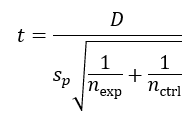
A t-test showed a p-value of p < 0.05, indicating a statistically significant difference between the two groups, with the experimental group achieving higher scores. Survey results further supported the effectiveness of interactive methods. Students in the experimental group rated their engagement and satisfaction significantly higher than those in the control group. Using a Likert scale, the average engagement score for the experimental group was 4.3, compared to 3.1 for the control group.
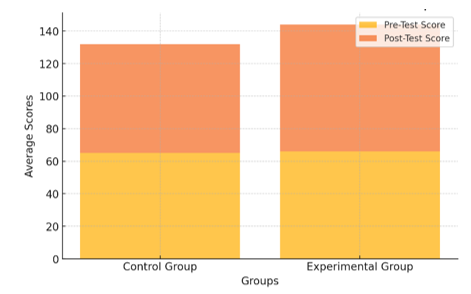
Figure 1. Comparison of pre- and post-test scores between control and experimental groups
The figure 1 chart illustrates the comparative average pre- and post-test scores for the control and experimental groups. The experimental group, which engaged in interactive learning, demonstrated a marked improvement in post-test scores compared to the control group. This suggests that the integration of interactive methods positively impacted students’ comprehension and retention, aligning with the survey results showing higher engagement and satisfaction. These findings highlight the effectiveness of interactive learning in enhancing the quality of education for energy engineering students.
Conclusion. In conclusion, this study demonstrates that integrating interactive methods into independent learning significantly enhances the educational outcomes of energy engineering students. The experimental group, which engaged in interactive learning strategies such as flipped classrooms, simulation-based learning, and collaborative projects, exhibited notable improvements in comprehension, engagement, and satisfaction compared to the control group. These findings underscore the effectiveness of interactive learning in fostering a deeper understanding of complex energy engineering concepts and suggest that such approaches should be more widely adopted in engineering education to better prepare students for the challenges of the modern energy sector.
References:
1. Prince, M. (2004). “Does Active Learning Work? A Review of the Research.” Journal of Engineering Education, 93(3),
3. Velegol, S. B., Zappe, S. E., & Mahoney, E. (2015). “The Evolution of a Flipped Classroom: Evidence-Based Recommendations.” Advances in Engineering Education.
4. Alharbi, A., & You, S. (2020). “A Simulation-Based Education Approach for the Electromagnetic and Electromechanical Transient Waves in Power Systems.”
6. Moreno-Ruiz, L., & García-Díaz, J. C. (2019). “Combining Flipped Classroom, Project-Based Learning, and Formative Assessment Strategies in Engineering Studies.”
9. Mazur, E. (2014). “The Benefit of Interactive Learning.” Harvard Graduate School of Education.

